What's A Point And Shoot Camera
The best point and shoot camera in 2021: easy to use cameras to fit every pocket
Included in this guide:

The best point and shoot cameras take all the hassle away from photography by providing an all-in-one camera that can fit in your pocket. You will notice a definite upgrade in terms of image quality from a smartphone and they're almost as easy to operate. Without the need to change lenses you can spend more time taking pictures, they're small so you can take them anywhere and the image quality is great - what other reasons do you need to buy a point and shoot?!
There are so many point and shoot cameras to choose from. Whether you need a budget-friendly option with less advanced specs or you're prepared to pay a little more to have features such as RAW images, a larger sensor and a faster burst rate there really is something for everyone. If you want to get into photography as a hobby but don't want to spend hundreds or even thousands of pounds on kit, point and shoot cameras make a lot of sense. They're also great for taking on holidays, day trips or special occasions for casual snapping.
Even the priciest point and shoot cameras will cost you less than expensive DSLR and mirrorless systems. Lots of professional photographers will own a point and shoot that they keep on them at all times just in case a photo opportunity arises and they don't have their main kit with them. They provide an excellent way of capturing high-quality images without having to carry heavy kit around.
We think the cameras on our list are fantastic value for money. There's a mix of older and newer models because we think some point and shoots just can't be beaten such as the Panasonic ZS80/TZ90. What you want to shoot and how much time you want to spend processing them after using some of the best photo editing software will define which camera to go for.
To make navigating the guide easier we've split it into three sections:
Cheap and simple – They might be the most basic cameras you can buy but they do the job. They still offer a better zoom feature than your smartphone and you can normally get much closer to your subjects without any loss in image quality.
Waterproof – Whether you're an outdoorsy person or not, these tough cameras are great if you plan on using them near water or in the rain. Great for beach holidays or taking on hikes, these rugged cameras are often shockproof and have a case that can handle being dropped.
Longer zooms – You might be surprised how big the zoom range is on some of our favorite point and shoots. Basic cameras will give you a zoom range of 3 - 5x but some of the more expensive cameras can give you a 30x optical zoom. These larger zoom ranges are great for shooting subjects in the distance or introducing different perspectives into your work.
Better quality – The best point and shoot cameras will have larger sensors which make them better in low light, the lens is often capable of wider apertures down to f/2.8 and sometimes you can even set the camera to shoot in raw - perfect if you didn't quite expose an image properly. The more advanced cameras do cost more but the features often make it worth it.
Now that the best camera phones produce such good quality images you might wonder why you'd bother investing in a point and shoot but believe us, there is a massive difference in image quality. Even the smallest sensors in the cheapest point and shoots are usually bigger than the tiny ones in your smartphone. Features such as the built-in flash will also be much better quality than a phone flash and the zoom will cover a bigger range.
If you are looking for a really high-end point and shoot, check out our guide on the best compact cameras which covers more advanced and more expensive models. However, if you're just looking for a camera that is a step up from your phone camera and won't cost you much, scroll below to see the best point and shoots available.
Best point and shoot camera in 2021
Cheap and simple
If you don't want to pay a fortune and just want a camera that's straightforward and capable, these are the ones to buy.
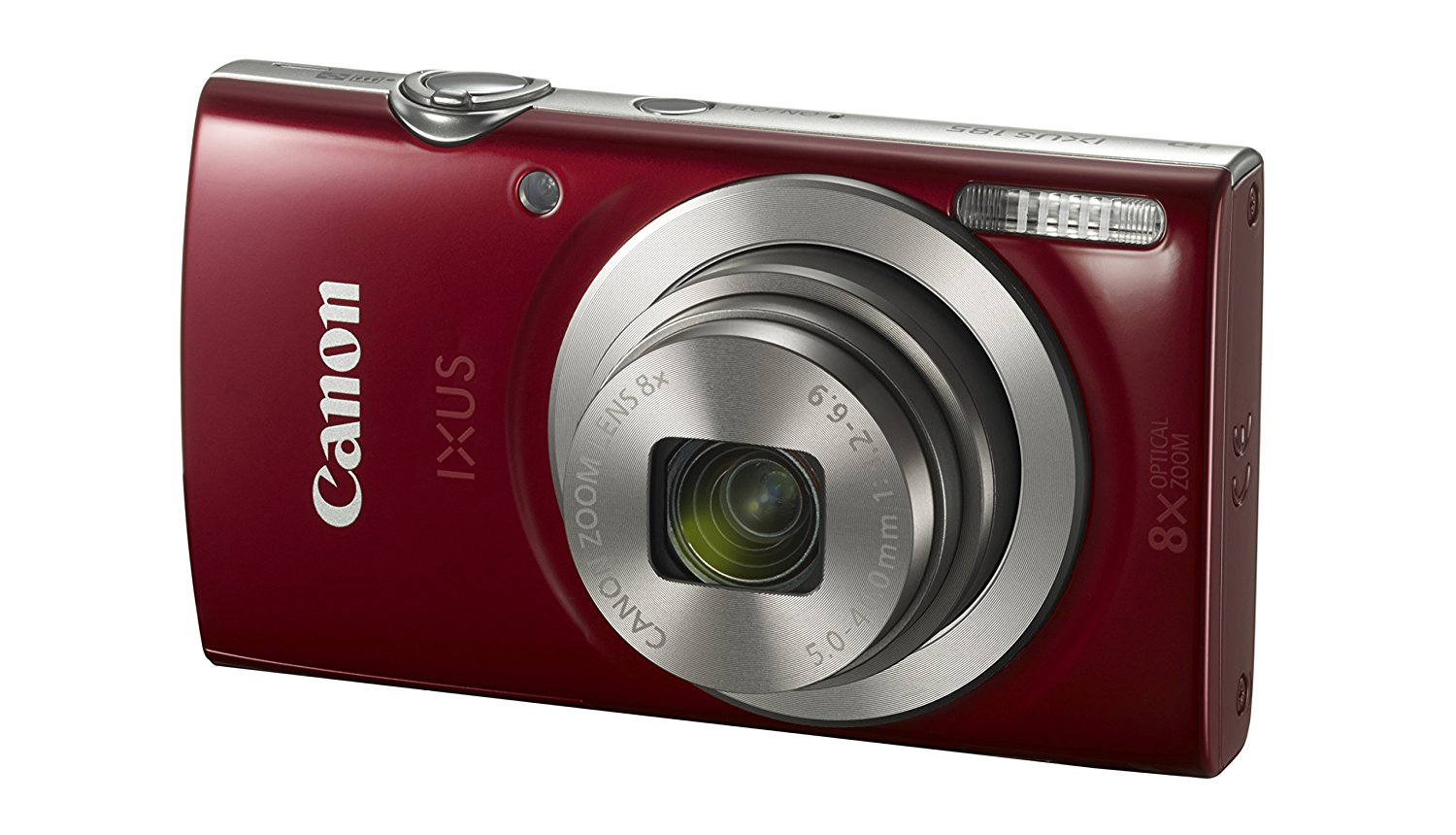
1. Canon PowerShot Elph 180 / IXUS 185
This little Ixus has an 8x zoom and bags more style than its price suggests
Specifications
Type: Compact
Sensor: 1/2.3in
Megapixels: 20MP
Lens: 28-224mm f/3.2-6.9
LCD: 2.7in, 230k dots
Maximum continuous shooting speed: 3fps
Max video resolution: 1280x720 (HD)
User level: Beginner
Reasons to buy
+Very easy to use +Slender body
Reasons to avoid
-Small, low-resolution rear LCD -Video not Full HD
The Canon IXUS range of simple little point-and-shoot cameras has been going steady for years. The cameras have a rep for being reliable and affordable, and the Canon IXUS 185 / Elph 180 is very much that. This beginner's camera delivers20MP from a relatively small 1/2.3in sensor, which isn't much of an upgrade from a smartphone at all. The zoom, however, is a different story, offering a respectable 8x optical range, starting from a usefully wide setting equivalent to 24mm. This is longer than most cameras at this price point, which makes the IXUS 185 a tempting choice.
The camera's light sensitivity runs from just ISO 100 through to ISO 1600, with the camera limiting itself to a maximum ISO 800 when left on Auto setting. Even with the Program mode implemented, operation remains pared back, although there are some creative digital filter options available for anyone choosing to dig deeper into the menus. So, no prizes for specs, but for this kind of money the Canon IXUS 185 does pretty much all you would expect. If cheap and simple is what you want, this is the best point and shoot camera right here!
Other popular Canon PowerShots:
• Canon PowerShot SX740 HS review
• Canon PowerShot SX70 HS review
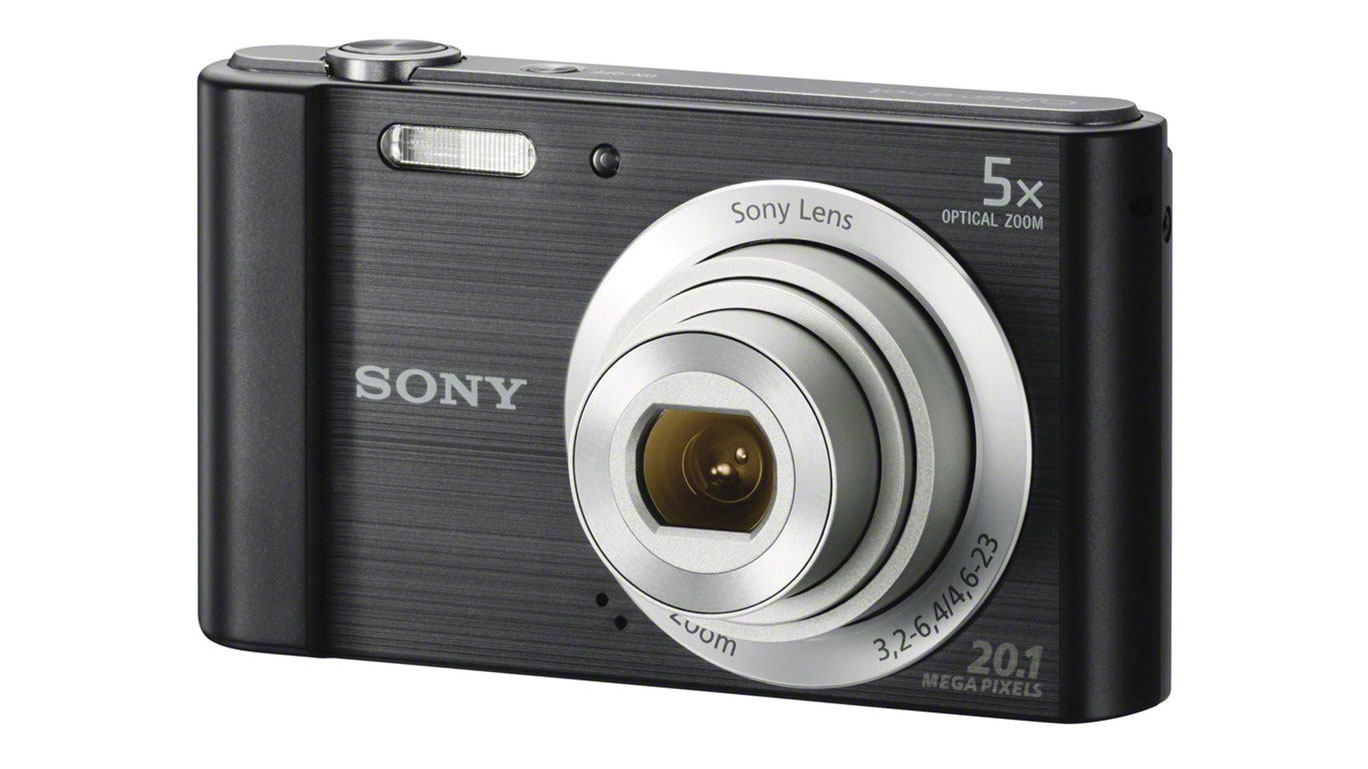
2. Sony Cyber-shot DSC-W800
This little Sony is a smart little point and shoot camera for the family
Specifications
Type: Compact
Sensor: 1/2.3in
Megapixels: 20.1MP
Lens: 26-130mm f/3.2-6.4
LCD: 2.7in, 230k dots
Maximum continuous shooting speed: 0.5fps
Max video resolution: 1280x720
User level: Beginner
Reasons to buy
+5x zoom range +Slim, stylish body
Reasons to avoid
-Slow burst mode -2.7in LCD somewhat small
The Sony W800 is another handy little point-and-shoot that puts itself just about far enough ahead of a smartphone to be worthy of consideration. Once again, the lens is the star of the show here, a 26-130mm f/3.2-6.4 model that gives you a decent amount of shooting flexibility. It's not got much in the way of burst shooting, but provided you aren't going after fast-moving subjects, the W800 will get the job done. It's ridiculously affordable too, consistently cheaper than the Canon IXUS 185.
Waterproof
Want to take your point-and-shoot camera underwater? Want to hike it up mountains, shoot in the snow, or in extreme heat? These are the tough and rugged cameras to choose.
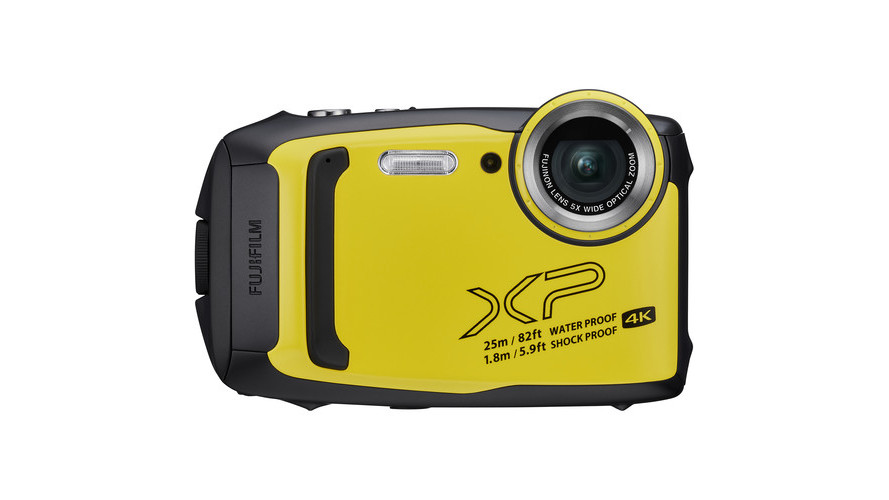
3. Fujifilm XP140
The XP140 is easy and eye-catching – you won't lose this on the beach!
Specifications
Type: Compact
Sensor: 1/2.3in
Megapixels: 16.4MP
Lens: 28-140mm (equiv) f/3.9-4.9
LCD: 3in, 920k dots
Waterproof: 25m/82ft
Shockproof: 1.8m/5.9ft
Freezeproof: -10ºC/14ºF
Max video resolution: 4K
Reasons to buy
+Everything-proof +Useful zoom lens
Reasons to avoid
-4K tops out at 15p -No manual/RAW shooting
Dunk it 25m underwater, drop it on the rocks from 1.8m in the air or take in into sub-freezing temperatures; the Fujifilm FinePix XP140 can handle practically anything you care to throw at it. Even without factoring in its tough build, this is a capable camera in its own right, delivering high-quality images in a range of lighting conditions, and even managing to shoot UHD 4K video (albeit at a pretty middling 15p frame rate). It's extremely easy to pick up and use, with helpful scene recognition modes to make the most of different situations, though it's worth noting that it lacks manual modes and RAW capability, which might start to frustrate the more serious photographer. If that describes you, then it might be worth taking a gander at the Olympus Tough TG-6, just below...
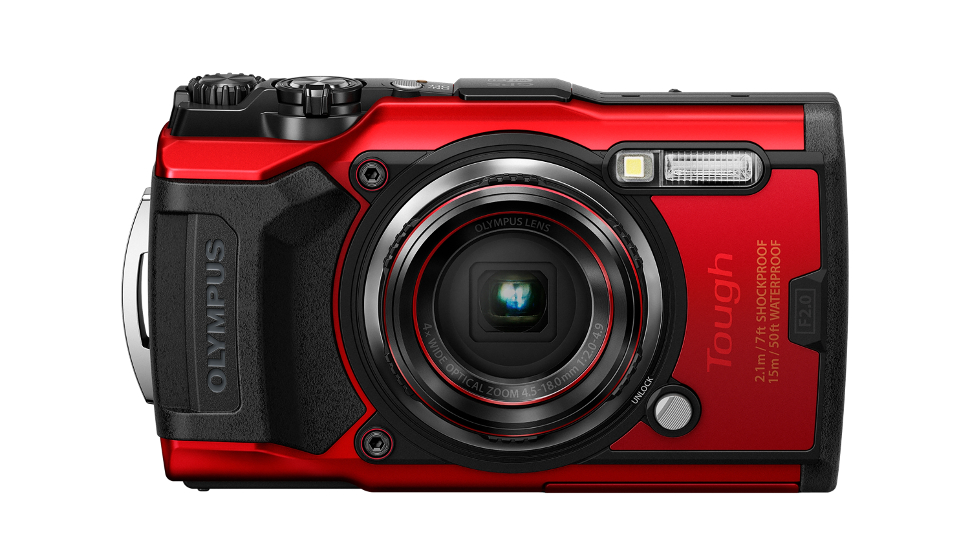
Hard as nails but simple to use, the TG-6 is great for adventure
Specifications
Type: Compact
Sensor: 1/2.3in
Megapixels: 12MP
Lens: 25-100mm f/2-4.9
LCD: 3in, 1,040k dots
Maximum continuous shooting speed: 20fps
Max video resolution: 4K
User level: From kids to adults
Reasons to buy
+Super-fast burst +Tough and waterproof
Reasons to avoid
-Smaller sensor -Minor upgrade over predecessor
If you want a camera that does what it says on the tin the Olympus Tough TG-6 is exactly what you need. It might have a small 1/2.3-inch sensor but all things considered, it produced good image quality and it can shoot in 4K video. It has a 25-100mm with an aperture of f/2 at the wide end and f/4.9 when its at its maximum zoom. It includes lots of interesting features that really come to life when shooting in clear water such as Macro and Microscope modes which allow you to get up close and personal. The ability to capture RAW stills and shoot at up to 20fps also make this camera a very good choice. The best thing of all is that it can really take a bashing making it perfect for families with little ones. It's a superb travel camera that benefits from excellent waterproofing - perfect for the more adventurous (or clumsy) type.
Read more: Olympus Tough TG-6 review
Longer zoom
For getting pixel-perfect images from a distance, nothing beats an optical zoom. These are the point-and-shoot cameras for bringing far-away subjects into close focus.
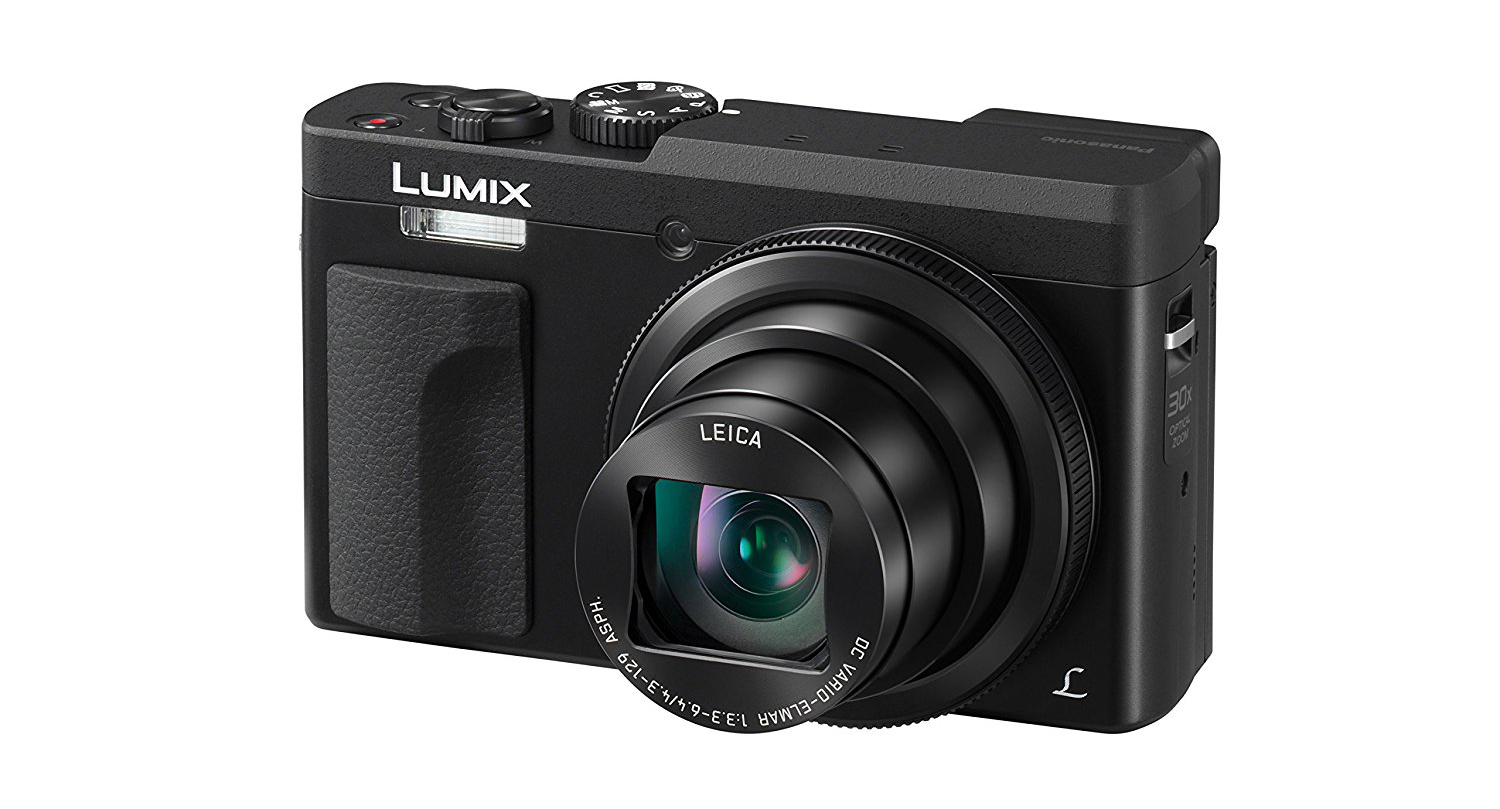
5. Panasonic Lumix ZS70 / TZ90
The perfect travel camera – a big zoom range in a pocket-sized body
Specifications
Type: Compact
Sensor: 1/2.3in
Megapixels: 20.3MP
Lens: 24-720mm 3.3-6.4
LCD: 3in tilting, 1,04k dots
Maximum continuous shooting speed: 10fps
Max video resolution: 4K
User level: Beginner to intermediate
Reasons to buy
+Effective image stabilisation system +Selfie functionality works very well
Reasons to avoid
-Viewfinder is very small -Soft results at wide-angle setting
Remember when we said we wouldn't be biased against older cameras? Well this is the perfect example of why we still think they're great. Released in 2017, the Panasonic ZS-70/TZ-90 still has one of the best zoom lenses available. Part of Panasonic's long-running ZS range ('TZ' in the UK), these feature stuffed point and shoots are ideal cameras for traveling with. It's wifi ready so you can transfer images on the go, has an impressive 30x zoom (24-720mm full-frame equivalent) and has the option of shooting in raw.
Unlike other point and shoots it has an electronic viewfinder, albeit a small one, but it's nice to have the option to use one. It has a 49-point autofocus system which is speedy enough, image quality is pretty good and its metering system helps to balance exposure in a variety of scenes. The ZS70 is without a doubt one of the best point and shoot systems for balancing versatility and portability with a low price point.
There are newer versions in the ZS70 range but for the price, we think the ZS70 is pretty unbeatable. You may also want to consider the Panasonic Lumix ZS200/TZ200 which has a bigger 1-inch sensor but only has a 15x zoom. It all depends on whether you want better low light capabilities or be able to zoom in more. We still think the ZS-70 has the edge which is why we have included it in the list.
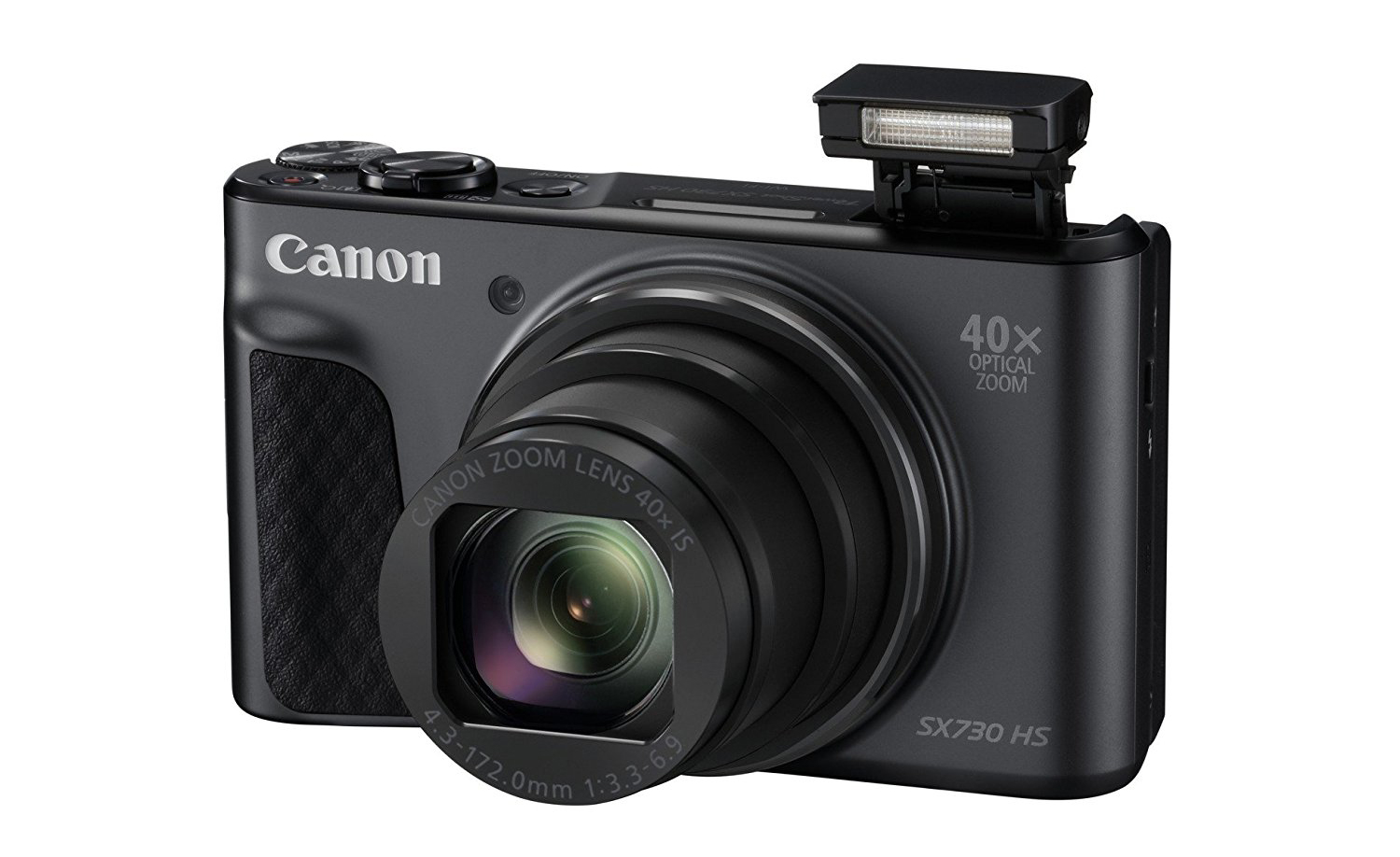
A monster 40x zoom makes this Canon compact great value
Specifications
Type: Compact
Sensor: 1/2.3in
Megapixels: 20.3MP
Lens: 24-960mm f/3.3-6.9
LCD: 3in tilting, 922k dots
Maximum continuous shooting speed: 10fps
Max video resolution: 4K
User level: Beginner
Reasons to buy
+Excellent zoom for such a small body +Good operational response +4K video
Reasons to avoid
-LCD isn't touch sensitive -No Raw shooting available
It may be diminutive, but the 20.3MP Canon PowerShot SX740 HS has a lens reach that outdoes what most professionals can achieve with their DSLRs, offering a focal rang equivalent to a whopping 24-960mm in 35mm terms. Also very useful here is an LCD that can be flipped to face the front, and thus the intended subject. Unsurprisingly, we also get a host of selfie-friendly shooting modes, although the camera still offers plenty of control for times when you need to intervene, with the usual PASM suspects selectable via the mode dial. You also get the ability to shoot 4K video (if you can make do with just Full HD the previous version Canon PowerShot SX730 HS may be found slightly cheaper). Autofocus performance is very good, however, as is image quality. Overall, this is a point-and-shoot camera with plenty of punch.
Better quality
"Point-and-shoot" doesn't mean cheap and poor-quality! Here are the point-and-shoot cameras that cost a little more, but deliver image quality comparable to professional and enthusiast system cameras.
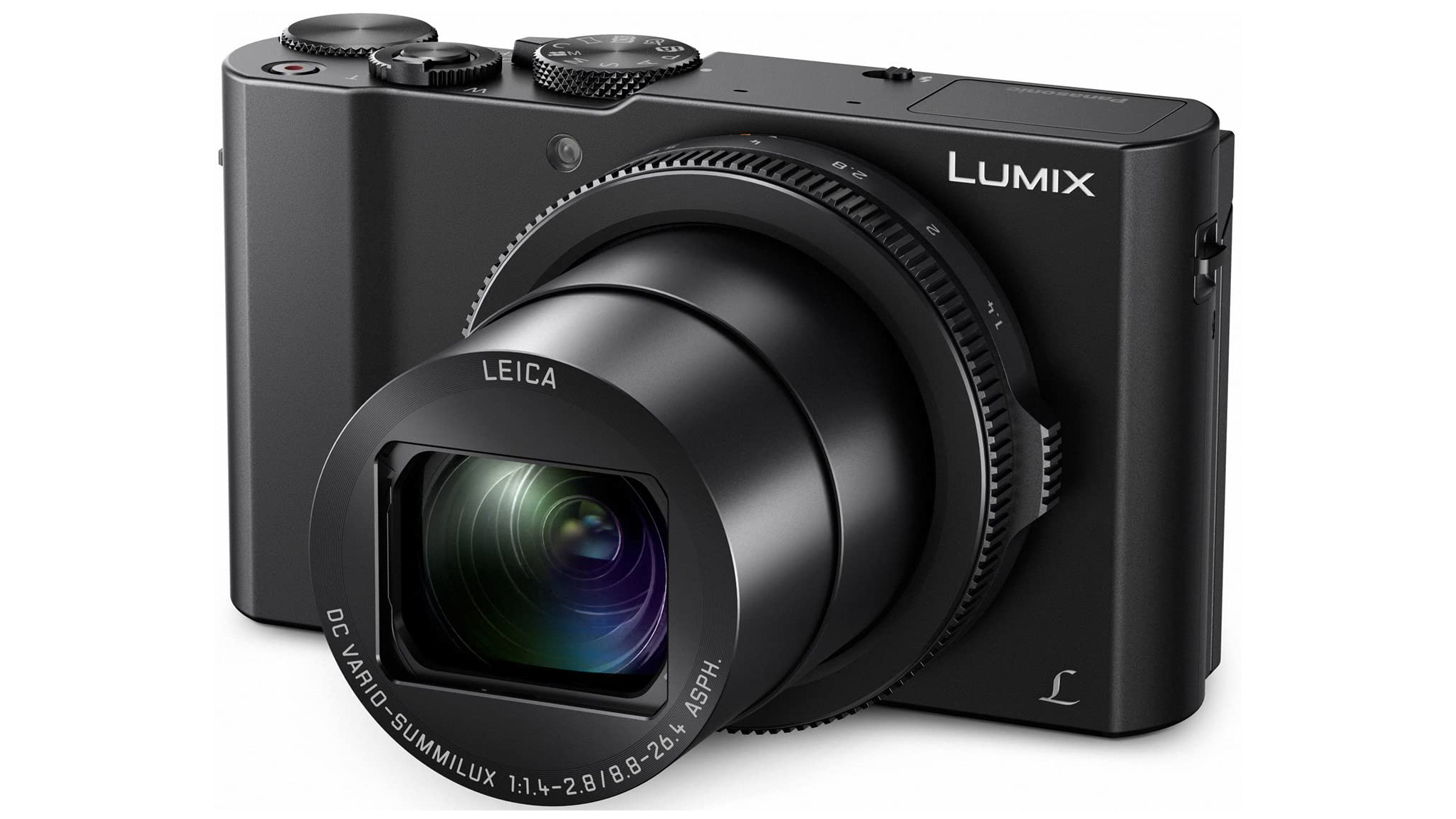
7. Panasonic Lumix LX15 / LX10
A 1-inch sensor provides premium point-and-shoot picture quality
Specifications
Type: Compact
Sensor: 1in
Megapixels: 20.1MP
Lens: 24-72mm f/1.4-2.8
LCD: 3in tilting, 1,040k dots
Maximum continuous shooting speed: 10fps
Max video resolution: 4K
User level: Beginner to intermediate
Reasons to buy
+F/1.4 max. aperture (at wideangle) +Swift and accurate AF system
Reasons to avoid
-No electronic viewfinder -No proper grip
If you want a point and shoot camera that also delivers a visible jump up in picture quality from a camera phone, you need one with a larger sensor. The Panasonic LX15, which goes by the name LX10 in some territories, has a 1-inch 20-megapixel sensor that does the job perfectly. It's true that there is no built-in EVF, which might put some people off, and the smooth finish to the body might make it look stylish but doesn't make for the firmest handgrip. But the responsive touchscreen is terrific, the dual control rings provide a very pleasing user experience, and the 24-72mm has one of the widest aperture settings around, courtesy of its f/1.4 to f/2.8 aperture range. Overall, this neat little snapper has the near-perfect balance of features, performance and pricing. It's small enough for your pocket, easy for beginners, but powerful enough to be one of the best point and shoot cameras for serious photographers.
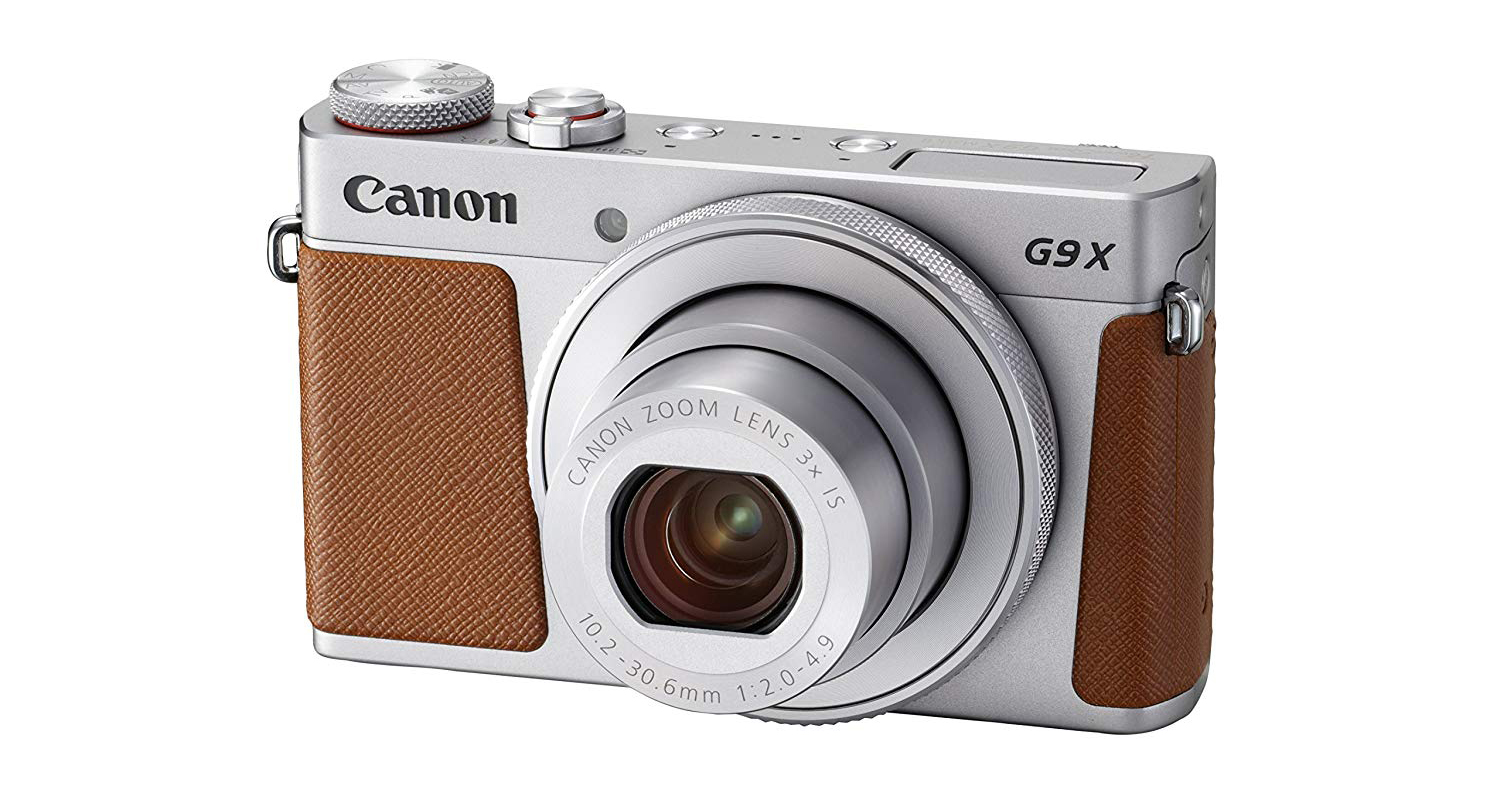
Canon's cheeky little G9 X brings a big 1-inch sensor and even bigger value
Specifications
Type: Compact
Sensor: 1in
Megapixels: 20.1MP
Lens: 28-84mm f/2-4.9
LCD: 3in, 1,040k dots
Maximum continuous shooting speed: 8.2fps
Max video resolution: 1920x1080 (Full HD)
User level: Beginner to intermediate
Reasons to buy
+Compact size +Easy to use
Reasons to avoid
-Zoom range is a little limited -No 4K video recording
The Canon PowerShot G9 X Mark II is a rather sophisticated looking point-and-shoot camera, courtesy of its rather minimalist yet traditional appearance and streamlined controls, which have the benefit of keeping the body endearingly dinky. Despite this, it's something of a beast under the bonnet, with a 1in sensor paired with a wide-angle 28-84mm equivalent lens, whose maximum aperture at wide-angle is a respectable f/2. There's no viewfinder, but the 3in LCD on the rear also responds to touch, which again ensures that physical controls can be kept to a minimum. To sum up, this is a neat-looking, well-specced point and shoot compact camera that can produce vastly superior images to a camera phone – and it's rather nice to look at and use.
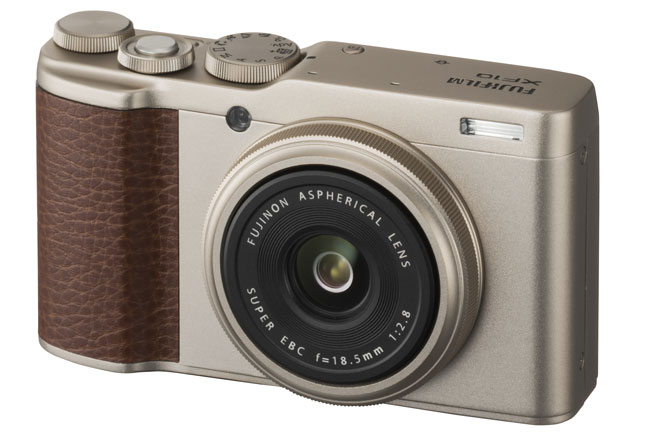
9. Fujifilm XF10
If you can live without a zoom, the XF10 is like a DSLR in your pocket
Specifications
Type: Compact
Sensor: APS-C
Megapixels: 24MP
Lens: 18.5mm f/2.8
LCD: 3in, 1,040k dots
Maximum continuous shooting speed: 6fps
Max video resolution: 4K
User level: Intermediate
Reasons to buy
+Small and light +Film simulation modes
Reasons to avoid
-Fixed wide-angle perspective -Some autofocus issues
One of the most travel-friendly cameras in Fujifilm's range, the XF10 is designed to be thrown into a bag or pocket and taken on adventures, weighing just 280g. It's designed to make it easy to produce some of Fujifilm's legendarily beautiful JPEGs straight out of camera, with the full suite of Film Simulation modes for a highly stylised look. There is a catch. It's small, it's pocketable and it has a big APS- C sensor to product superb images – but this has only been possible because it has a fixed focal length 28mm wide-angle lens rather than a zoom. Some users have complained of issues with autofocus speed and accuracy, so it's a camera to be used with a bit of care, and not just for instant snapping.
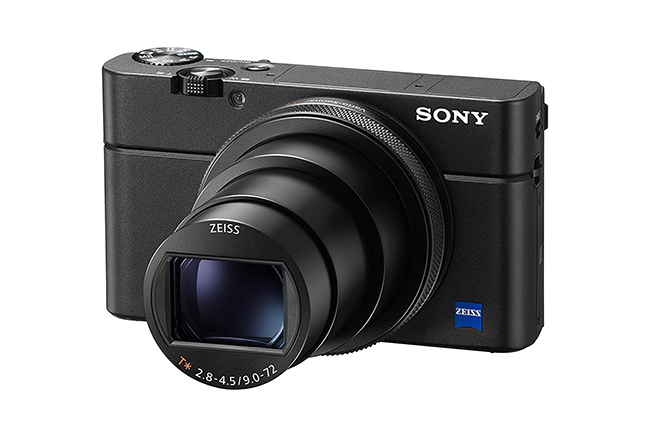
10. Sony Cyber-shot RX100 VI
Pricey, but a real pocket rocket for both snappers and experts
Specifications
Type: Compact
Sensor: 1in
Megapixels: 20.1MP
Lens: 24-200mm f/2.8-4.5
LCD: 3in tilting, 1,228k dots
Maximum continuous shooting speed: 24fps
Max video resolution: 4K
User level: Intermediate
Reasons to buy
+Expansive zoom range +Built-in EVF
Reasons to avoid
-Pricey for what it is -No touchscreen supplied
While the RX100 VI does cost more than most point-and-shoot buyers are willing to countenance, we couldn't not include it here for the simple reason that this series represents pretty much the best the world of compact cameras has to offer. As the name implies, the VI is the sixth iteration in a series that Sony has been perfecting for many years, providing an exceptional blend of image quality and portability. While the VI has since been superseded by the VII, we reckon this model offers an outstanding balance of power and value for money.
Super-smooth 4K footage and dynamic burst shooting – it's all here, and there are plenty of extra features that many cameras on this list don't offer, such as the pop-up electronic viewfinder. And all this is housed in a camera small enough to pop into a pocket – provided you don't mind a few of the controls being a little fiddly to use, it's a boon for travel photography and videography alike.
If you like the sound of the RX100 VI but are still put off by the cost, then check back through previous models in the RX100 series, as they are without exception very good, and most of them are popular enough to still be in production. And, alternatively, if you've got more cash to splash then definitely take a look at the currently flagship, the Sony RX100 VII.
Read more:
- The best cameras under $200 / £200
- The 10 best cameras under $500 / £500
- The best camera bags
- The best cheap cameras
- The best compact cameras
- The best mirrorless cameras
- The best travel cameras
- The best point-and-shoot cameras
- The best waterproof cameras
- The best cameras for kids
- The best pink cameras

Rod is the Group Reviews editor for Digital Camera World and across Future's entire photography portfolio, with decades of experience with cameras of all kinds. Previously he has been technique editor on N-Photo, Head of Testing for the photography division and Camera Channel editor on TechRadar. He has been writing about photography technique, photo editing and digital cameras since they first appeared, and before that began his career writing about film photography. He has used and reviewed practically every interchangeable lens camera launched in the past 20 years, from entry-level DSLRs to medium format cameras, together with lenses, tripods, gimbals, light meters, camera bags and more.
Related articles
What's A Point And Shoot Camera
Source: https://www.digitalcameraworld.com/buying-guides/best-point-and-shoot-cameras
Posted by: carpenterhices1941.blogspot.com

0 Response to "What's A Point And Shoot Camera"
Post a Comment